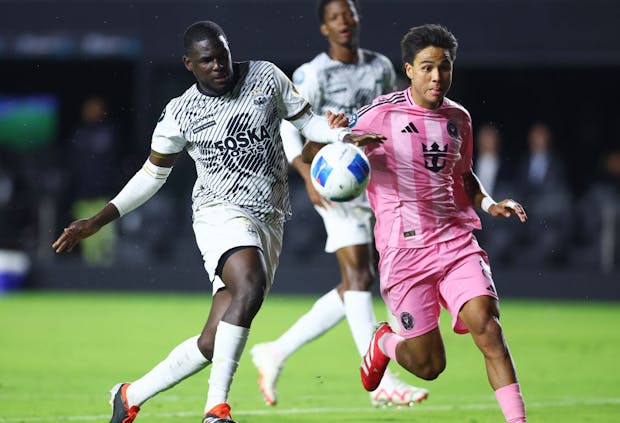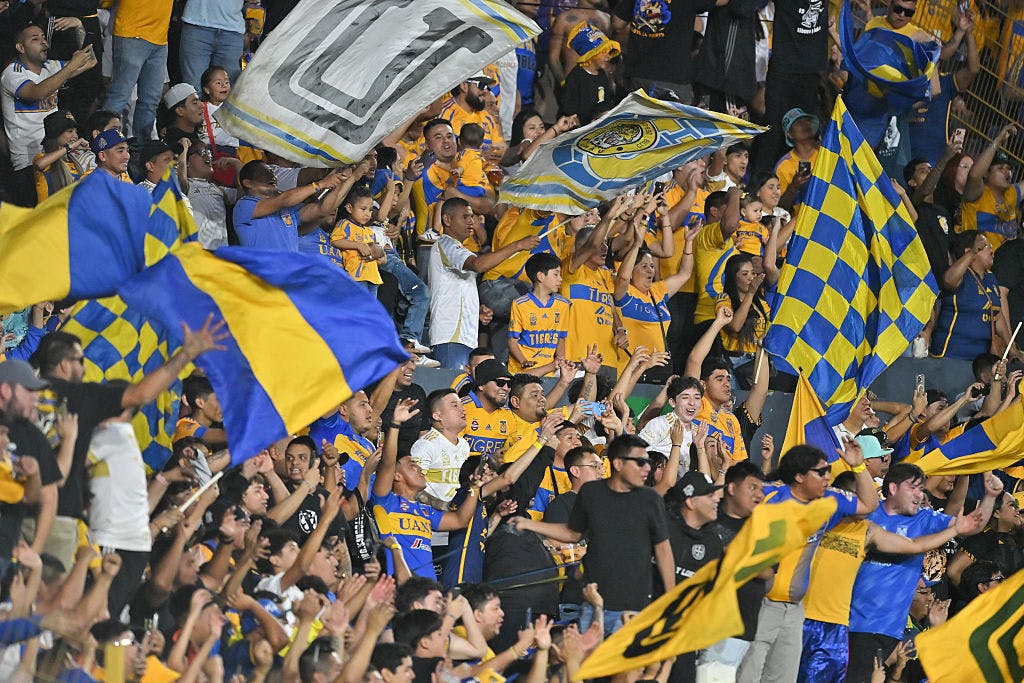
With the two-legged semi-finals of this year’s Concacaf Champions Cup kicking off this week, there is growing evidence that last year’s structural overhaul of the region’s premier club football tournament is beginning to pay dividends.
The Champions Cup replaced the Concacaf Champions League in 2024 – but this was more than a simple name change. Concacaf, football’s governing body in North America, Central America and the Caribbean, expanded the tournament from 16 to 27 teams, introduced three new regional qualifying competitions – the Central American Cup, Caribbean Cup and Leagues Cup – and hiked up prize money more than fivefold.
It was a bold move – but the rebranded and revamped tournament appears to have captured the imagination.
Rocketing engagement
Social media engagements have rocketed by 223 per cent year-on-year in 2025, while broadcast interest has grown “meaningfully”, according to Philippe Moggio, Concacaf’s general secretary. Significant reach has been secured through multilingual coverage via the likes of Disney+ and ESPN in the Caribbean, Central America and South America, One Soccer in Canada, and Fox Sports, TUDN and UniMás in the United States.
In Mexico, Tubi – Fox’s ad-supported streaming service, which is the exclusive home for the competition in the country – attracted a cumulative audience of 55.8 million in the first three rounds of this year’s tournament alone, with more than 17.5 million devices tuning into the action.
“The numbers reflect just how much this competition resonates,” Moggio says. “With the rebrand and a fresh knockout format, we’ve elevated the experience for clubs, fans and partners alike.”

Rising reputation
With the switch from the Concacaf Champions League to Champions Cup, Concacaf increased the prize money overnight, with 2024 champions CF Pachuca receiving over $5m. This move, according to Moggio, was a “game-changer” – raising the stakes for clubs and establishing the tournament’s importance on the global stage.
“For players, it brings prestige. For clubs, it’s a meaningful return that supports infrastructure, academies, and competitiveness; and for fans, it adds intensity to every match,” he says.
However, multiple factors have contributed towards the increasing levels of interest and engagement. The winners of this year’s tournament, for example, will secure their place at the second edition of the FIFA Club World Cup in 2029 – promising transformational exposure on the world stage.
Furthermore, Moggio adds, there is now a powerful storytelling element underpinning the tournament, ensuring “a consistent narrative that positions the Concacaf Champions Cup as the region’s ultimate club football prize”.
He adds: “We’ve also invested heavily in digital storytelling and targeted fan engagement, reaching diverse audiences who are hungry for club football and loyal to their teams. The success of our domestic leagues and global stars competing in this tournament adds to the spectacle.”
Compelling stories
This year, there are plenty of compelling stories to leverage as the tournament reaches its latter stages.
In the semi-finals, Inter Miami, the home of all-time great Lionel Messi as well as former Barcelona team-mates Jordi Alba and Sergio Busquets, are taking on Vancouver Whitecaps, bidding to become the first Canadian team to lift Concacaf’s top club trophy. The other semi-final is an all-Mexican affair, with Cruz Azul – aiming to become Concacaf champion for a record-equalling seventh time – up against Tigres UANL.
In an effort to amplify these rivalries and the passion that fans have for their favourite clubs, Concacaf unveiled a marketing campaign entitled ‘Epic Battles’ that ran on television, digital platforms and physical displays ahead of the tournament’s Round of 16.
This campaign built on an existing digital strategy emphasising player storytelling, short-form video and cross-platform content across social media platforms such as Instagram, TikTok and YouTube. This has helped to engage a younger demographic that “over-indexes in sponsor awareness and purchasing behaviour”, says Moggio, who adds that the tournament’s primary audience is between 13 and 34 years old.
“Our fan base is young, diverse, and digitally native, and they are two times more likely than the US average to talk about sponsors, look them up online, and buy their products,” Moggio says. “This makes the Champions Cup a uniquely powerful platform for both brand awareness and conversion.

Commercial growth
Fuelled by this growing commercial engagement and momentum, the governing body has secured five new sponsors for the 2025 edition – the latest of which was US home improvement retailer Lowe’s, unveiled in early April.
Partnerships such as these signal confidence in the property from brands that are “looking to align with high-growth, high-passion audiences,” according to Moggio.
“For broadcasters, the competition delivers premium content with regional pride, international relevance, and knockout drama. In short, it’s a high-impact opportunity for partners who want to align with passion, growth, and cultural relevance.”
While there has been an understandable focus on broadcast and digital engagement, it is also noteworthy that in-stadium attendance is up by 16 per cent year-on-year – and this after the 2024 tournament generated the highest average crowds for Concacaf’s top club tournament in four years.
“Offline, we have amplified matchday experiences through fan zones, ‘money can’t buy’ moments, and branded stadium activations,” says Moggio. “These immersive touchpoints helped deepen emotional investment and loyalty, especially among youth and Hispanic audiences, who are core to our growth.”
Catalyst for growth
Concacaf relaunched the tournament as part of a ‘football-first’ strategy devised to turn around the fortunes of a governing body that nearly went bankrupt a decade ago. Now, the aim is to use the Champions Cup as a catalyst for growth across the region.
Above all, as Concacaf’s member associations develop their domestic leagues, the Champions Cup will provide a continental platform to showcase talent, with this summer’s Concacaf Gold Cup and FIFA Club World Cup in North America, plus the FIFA World Cup 2026 in Canada, Mexico and the US set to drive further momentum.
“We see the Concacaf Champions Cup as the engine of club football development in our region. It creates a consistent runway for top-level competition, exposure and investment,” Moggio says.
“The growth potential is significant. Geographically, we’ll see rising clubs from Central America and the Caribbean continue to push forward.
“Commercially, there’s room to scale broadcast reach and fan activations across new markets, and as our clubs earn spots in the FIFA Club World Cup, the Concacaf Champions Cup will become a scouting ground for global audiences. With growing parity and quality, I believe international interest will naturally expand.”